Throughout history, there have been numerous artifacts and treasures that have vanished without a trace, sparking curiosity and intrigue for centuries. From priceless diamonds to lost cities, these mysterious disappearances have captivated the imagination of adventurers, historians, and treasure hunters alike. Some vanished during war, others were stolen or hidden, while some may never have existed at all. In this article, we’ll explore famous artifacts whose whereabouts remain unknown, delving into their origins, the theories surrounding their disappearances, and why they continue to fascinate us today.
The Lost Dauphin

The Lost Dauphin refers to the mysterious fate of Louis-Charles, the young son of King Louis XVI and Marie Antoinette of France. Born in 1785, he was heir to the French throne, but after his father’s execution during the French Revolution, his life took a tragic turn. At just eight years old, he was imprisoned in the Temple prison in Paris, where he was held in harsh conditions. He died in 1795 at the age of ten, but the circumstances of his death have long been questioned. Some historians believe he may have been murdered, while others suggest he may have escaped. In the years following his death, multiple people claimed to be the lost Dauphin, leading to widespread speculation about his survival and the cover-up of his true fate. To this day, the mystery of whether Louis-Charles died in captivity or managed to escape continues to intrigue. The French royal family and the French government have both been involved in efforts to investigate his true fate, yet the truth remains elusive. New DNA testing in recent years has also failed to definitively solve the mystery.
The Mona Lisa’s Missing Years

While the Mona Lisa is arguably the most famous painting in the world today, its early years are marked by an intriguing mystery: its disappearance for two years in the early 20th century. Created by Leonardo da Vinci around 1503, the artwork was displayed in the Louvre Museum in Paris, but in 1911, it was stolen by an Italian handyman named Vincenzo Peruggia. Peruggia, who had previously worked at the museum, hid it in his apartment for over two years, believing that it should be returned to Italy as a national treasure. During this time, it was effectively “lost” to the public, and its whereabouts remained a mystery. In 1913, it was finally recovered when Peruggia attempted to sell it to an art dealer in Florence, and it was returned to the Louvre. The theft of the Mona Lisa led to worldwide headlines, and it became a symbol of cultural theft, adding to its legendary status. Despite its return, questions have persisted about how the painting was hidden for so long and what role, if any, art dealers or other institutions may have played in its brief disappearance.
The Amber Room
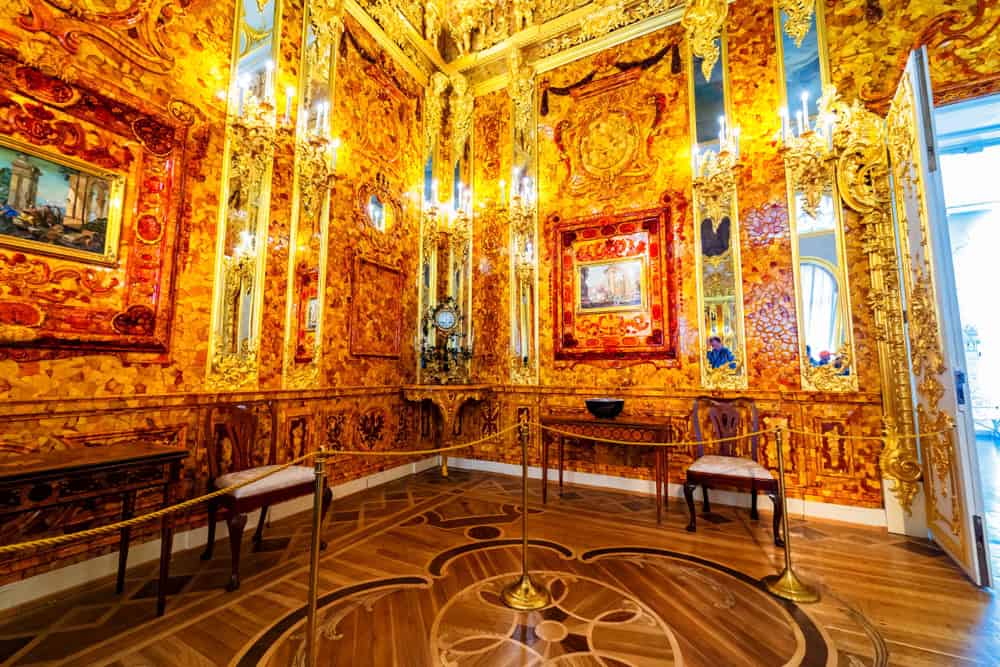
The Amber Room was a magnificent chamber decorated entirely with amber panels, gold leaf, and mirrors, originally constructed in the early 18th century. It was created by German craftsmen Andreas Schlüter and Bartolomeo Rastrelli, under the commission of Tsar Peter the Great of Russia. It was housed in the Catherine Palace of Tsarskoye Selo near St. Petersburg, Russia. It was considered one of the most remarkable achievements in interior design, often referred to as the “Eighth Wonder of the World.” During World War II, in 1941, Nazi forces invaded the Soviet Union, and it was looted and removed from its location. Despite numerous searches and investigations, its whereabouts remain a mystery to this day. Some believe the panels were hidden in a German castle, but no definitive evidence has ever surfaced to confirm this. Recent theories suggest it could have been hidden in a German submarine during the final stages of the war. Even though restorations have been made, the original one remains lost to history.
The Library of Alexandria
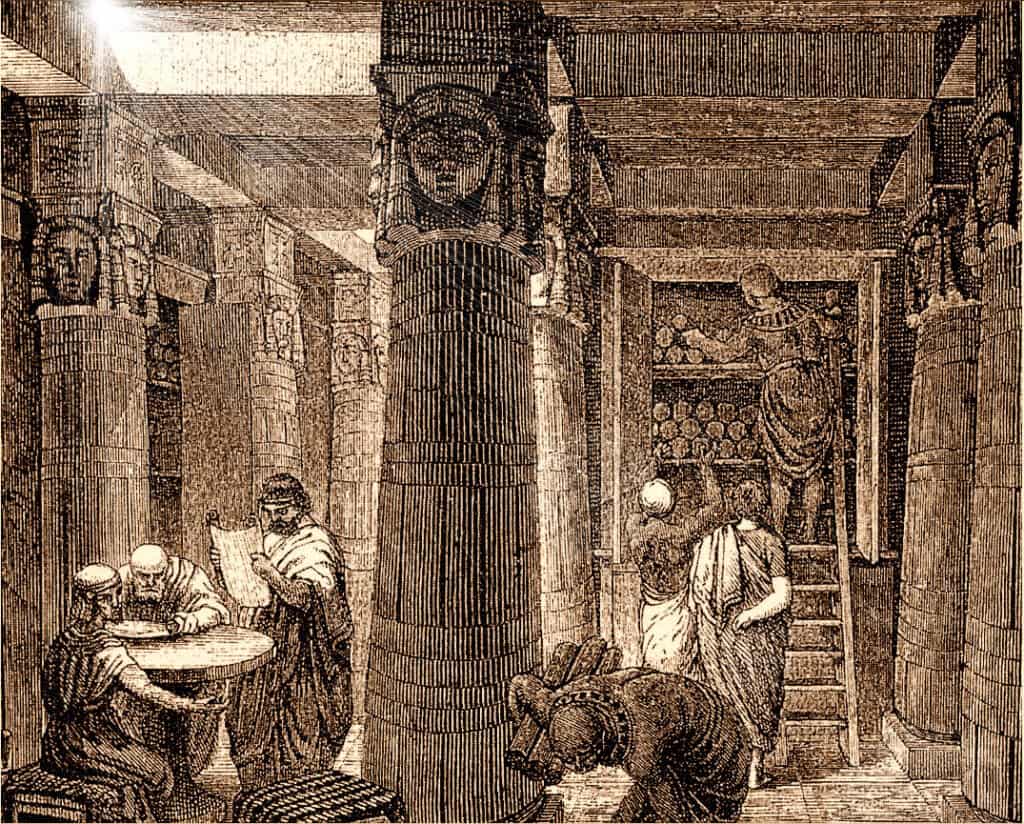
The Library of Alexandria, founded in the 3rd century BCE in Alexandria, Egypt, was one of the most significant libraries of the ancient world. It was a center of learning, containing countless scrolls and manuscripts, many of which were written by prominent philosophers, mathematicians, and scientists. The exact number of works housed in the library is unknown, but estimates suggest it contained anywhere from 40,000 to 400,000 texts. Over the centuries, it suffered several incidents of destruction, but it was during the Roman conquest of Egypt that its ultimate demise is often attributed. A combination of fires, invasions, and the eventual decline of Alexandria as a cultural hub led to the complete loss of its contents. Despite the fact that some scrolls were preserved, there is no trace of the library itself today. It has become a symbol of lost knowledge and the fragility of cultural heritage. Some theories claim parts of its collection could have been hidden in nearby tombs or private collections. Others believe some texts may have been recovered by scholars in later centuries.
The Lost Treasure of the Knights Templar

Matthew Paris / Wikimedia Commons
The Knights Templar were a medieval order of knights known for their wealth and their role in the Crusades. The order amassed vast amounts of wealth, including priceless relics, religious artifacts, and treasure, much of which was kept hidden. In the early 14th century, King Philip IV of France, heavily in debt to the Templars, orchestrated their downfall, ordering the arrest of many knights and the dissolution of the order. Before their arrest, however, they are believed to have hidden their treasure, which included gold, manuscripts, and possibly sacred relics like the Holy Grail. Many locations have been speculated to house the treasure, including Oak Island in Canada and temples in the Mediterranean. Despite numerous searches, no conclusive evidence of the treasure’s location has been found. Some claim they purposely hid their wealth to prevent it from falling into the wrong hands. Their involvement with the Crusades and their secretive rituals have led to countless myths surrounding the treasure. The treasure may have been spread out over multiple locations to avoid detection.
The Monuments of the Maya
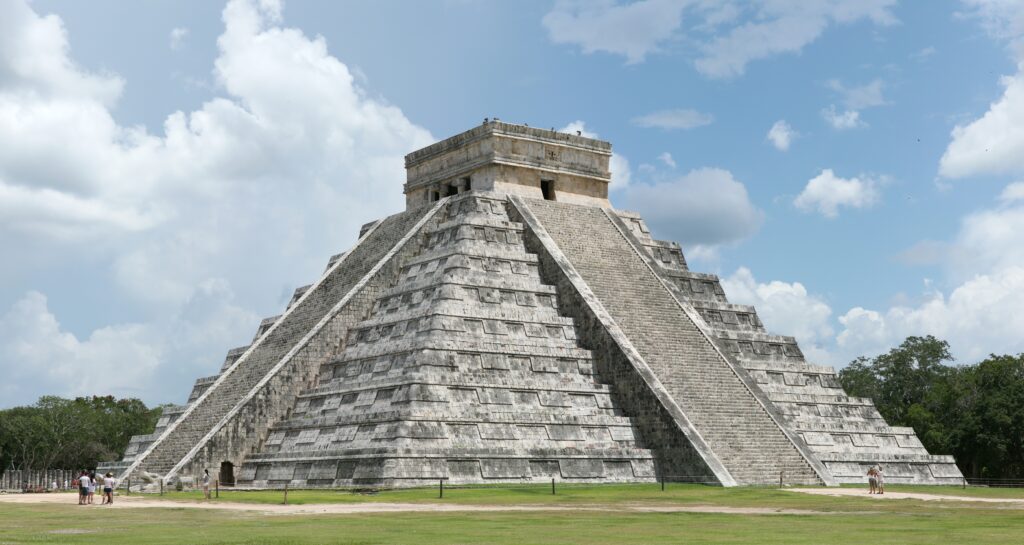
The ancient Maya civilization was known for its impressive architecture, advanced knowledge of astronomy, and vast cities spread across Mesoamerica. Among the greatest mysteries are the numerous stone monuments created by the Maya, including giant stelae and altars. Many of these, which chronicled Maya rulers and their achievements, have vanished without a trace. While some were destroyed by natural forces such as erosion or floods, others were looted or intentionally buried during the collapse of the Maya civilization around the 9th century CE. Notably, the city of El Mirador, once home to a great number of monumental carvings, was abandoned and the monuments lost to time. Though some were recovered and are displayed in museums today, others remain missing, often buried beneath jungle growth. Scholars continue to search for lost Maya cities and their artifacts, but the location of many important monuments is still unknown. Recent archaeological surveys have uncovered additional sites that could contain hidden monuments. As new technologies improve, it’s possible that some of the missing artifacts may eventually be found.
The Ark of the Covenant
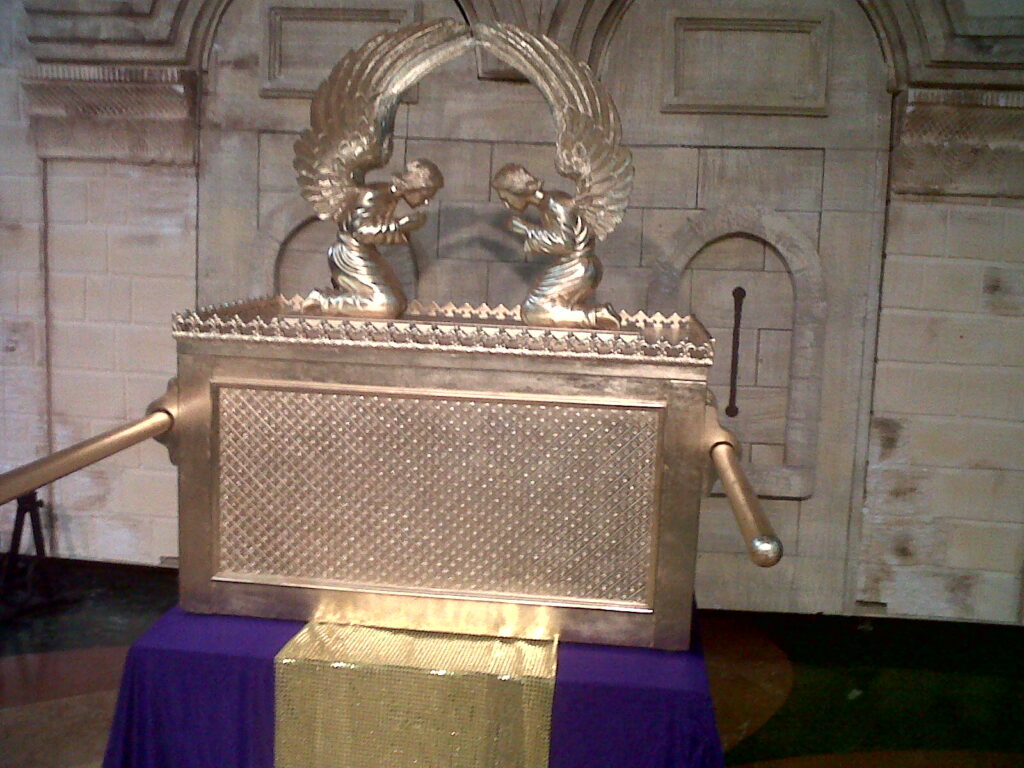
The Ark of the Covenant, described in the Bible as a gold-covered wooden chest containing the stone tablets of the Ten Commandments, has been a subject of fascination for centuries. According to the Bible, the Ark was created by Moses under God’s direction and was kept in the Holy of Holies within the Tabernacle. For a time, it was housed in the First Temple in Jerusalem until it disappeared after the Babylonians sacked the city in 586 BCE. Many theories suggest it was hidden by priests to protect it from invading forces, but its exact location remains unknown. Some believe it was brought to Ethiopia, where it is said to be guarded by monks at the Church of St. Mary of Zion. Others speculate that it was hidden in the caves of Qumran or that it was destroyed or lost during one of the many ancient conflicts. Despite the religious and historical significance of it, no verifiable trace of it has been found. Modern-day searches continue, especially in Ethiopia, but there is little evidence to suggest it is still there. The mystery of its disappearance remains one of the most enduring legends.
Cleopatra’s Tomb

Cleopatra VII, the last active ruler of the Ptolemaic Kingdom of Egypt, is one of the most iconic figures of ancient history. Following her death in 30 BCE, Cleopatra and her lover, Julius Caesar’s ally, Mark Antony, were buried in a tomb that was rumored to be located near Alexandria. Despite historical accounts suggesting their tomb was lavish and adorned with treasures, it has never been conclusively located. The ancient Roman historian Plutarch claimed that it was somewhere near the Egyptian palace, but no evidence has been found to confirm this. Archaeologists have spent years searching the coastal area around Alexandria, but its location has remained elusive. Some believe that her tomb could be hidden beneath the ruins of Alexandria or that it was looted during the city’s decline. The disappearance of her final resting place is one of the most tantalizing unsolved mysteries in archaeology. Recent discoveries in the area have sparked new hope that her tomb could one day be found. Technological advances in ground-penetrating radar may offer a breakthrough in the search.
The Vinland Map
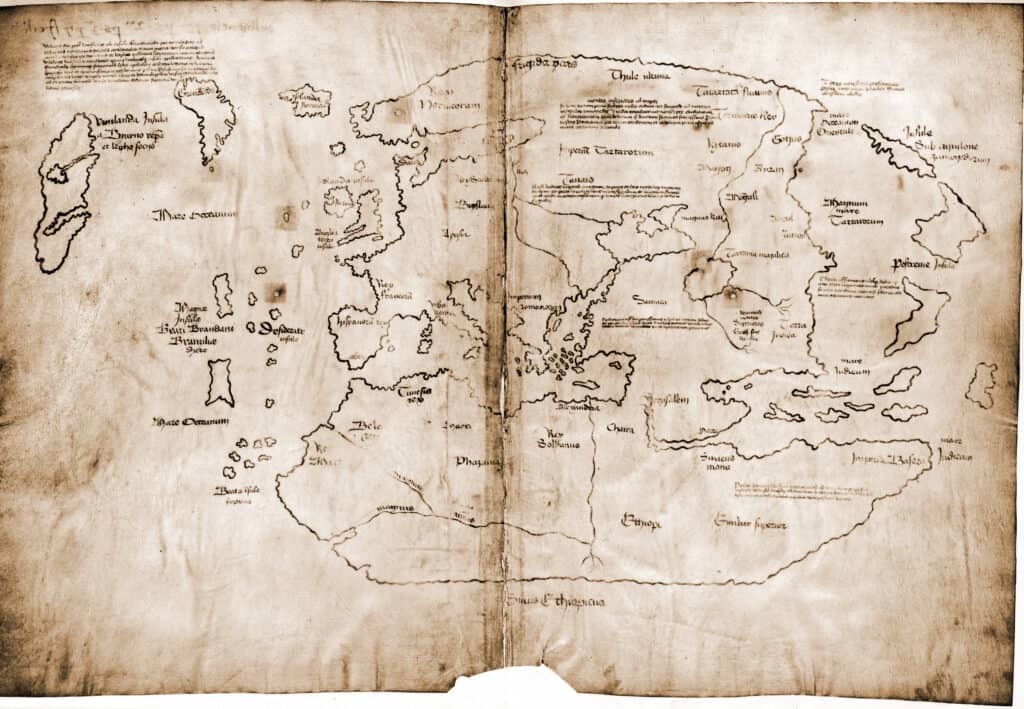
The Vinland Map is a world map that depicts part of North America, suggesting that Vikings reached the continent centuries before Columbus. It is believed to date back to the 15th century, though its origins and authenticity are hotly debated. It shows a section of North America, with a region labeled “Vinland,” which corresponds to what is thought to be Newfoundland. Some scholars believe the map was created based on earlier Viking voyages, while others argue that it is a medieval fabrication. Its disappearance remains a mystery, as it was briefly lost after being shown to the public in the early 20th century. Despite efforts to trace its origins, it was never conclusively linked to a specific Viking expedition. Its disappearance from the historical record has led to debates about its authenticity and significance. Modern technological tests on similar artifacts might help determine their origins. The mystery of its disappearance, however, only adds to its enigmatic allure.
The Hope Diamond

The Hope Diamond is a world-famous 45.52-carat blue diamond, known not only for its size and color but also for the legend of misfortune that surrounds it. It was originally owned by King Louis XIV of France, who acquired the diamond in the 17th century. The stone was later stolen during the French Revolution and eventually surfaced in London, where it was sold to a number of owners. By the 19th century, it came into the possession of Henry Philip Hope, a wealthy banker, from whom it gained its current name. It was said to bring bad luck to its owners, as many of them suffered tragic fates. In 1958, it was donated to the Smithsonian Institution by jeweler Harry Winston, where it remains on display today. Despite its current location, there are still rumors that the stone has mysteriously vanished or been replaced with a replica, though no substantial evidence supports this claim. Experts have been unable to identify any missing pieces of it, and the rumors persist as part of its mystique.
The Lost City of Atlantis
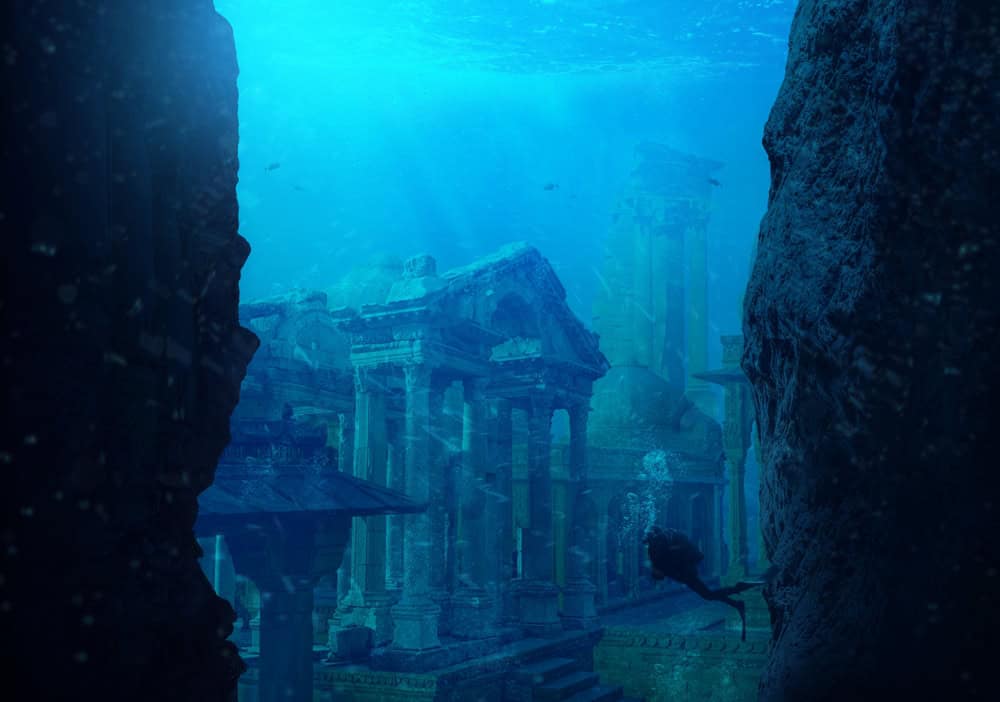
The myth of Atlantis, first mentioned by the ancient Greek philosopher Plato in his works “Timaeus” and “Critias,” tells of a powerful and technologically advanced civilization that existed over 9,000 years before his time. According to Plato, it was a large island located beyond the “Pillars of Hercules,” a reference to the Strait of Gibraltar. The civilization is said to have been wealthy and powerful, with grand architectural marvels and advanced knowledge of science and engineering. However, it eventually fell out of favor with the gods, who punished the Atlanteans by causing the island to sink into the ocean in a single day and night of misfortune. Despite numerous expeditions and theories suggesting various possible locations for Atlantis—from the Mediterranean to the Caribbean—no evidence of its existence has ever been found. Some believe that it may have been a real place that was simply destroyed by natural catastrophes, while others argue that it was purely allegorical. The lost city of Atlantis has since become a symbol of a great civilization lost to time. New research into underwater ruins in the Caribbean has sparked renewed interest in the potential discovery of it. While no definitive proof has surfaced, ongoing explorations continue to fuel the mystery.
This article originally appeared on Rarest.org.
More from Rarest.org
12 Rare Mammals That Live in the World’s Tallest Mountains

High-altitude regions around the world are home to some of the most unique and uncommon mammals on the planet. They have adapted to survive in the harsh, cold, and rugged environments of the world’s tallest mountains. Read More.
11 Mysterious Cave-Dwelling Creatures You Never Knew Existed

Beneath the earth’s surface lies a hidden world of caves, home to creatures that have evolved in complete darkness. These mysterious animals have adapted in remarkable ways, losing their vision, developing heightened senses, and finding ingenious methods to survive in harsh, nutrient-poor environments. Read More.
20 Graceful Marine Mammals That Glide Through the Ocean`s Depths

The ocean is home to some of the most graceful creatures on Earth. Marine mammals glide effortlessly through its depths, showcasing their beauty and power. Read More.
